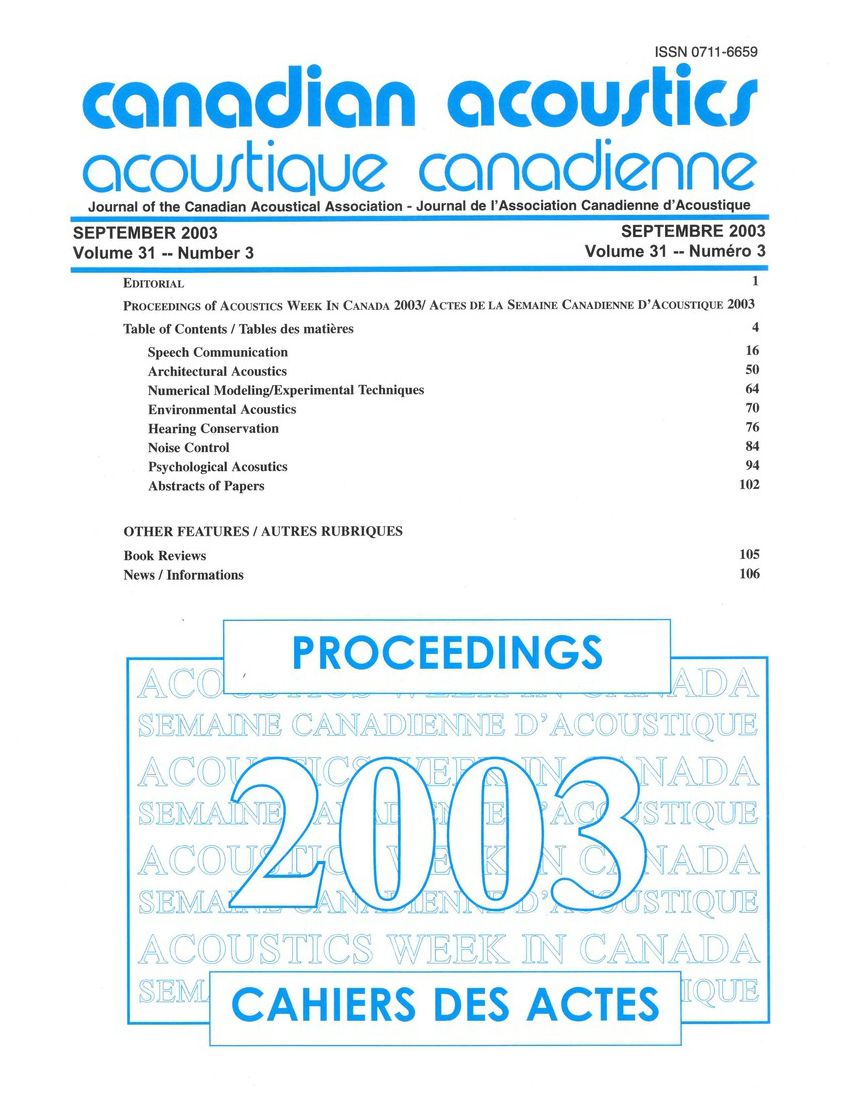On structureborne power flow from wood studs to direct-attached gypsum board
Mots-clés :
Damping, Mathematical models, Natural frequencies, Screws, Statistical methods, Studs (fasteners), Vibrations (mechanical), Walls (structural partitions), Wood products, Scanning laser vibrometer, Statistical energy analysis, Wood studsRésumé
A wall consisting of a single layer of gypsum board attached to a single row of wood studs which acts as one or more subsystems depending on frequency was shown. The ratio of transmitted power to source (stud) energy was reasonably independent of screw location, which was to be expected as the measured mobilities do not change appreciably if the distance from the edge was greater than 50 mm. Since the tud was highly damped and have low modal density the energy will not be uniform and the power flow will not be the same at all points.Fichiers supplémentaires
Publié-e
Comment citer
Numéro
Rubrique
Licence
Author Licensing Addendum
This Licensing Addendum ("Addendum") is entered into between the undersigned Author(s) and Canadian Acoustics journal published by the Canadian Acoustical Association (hereinafter referred to as the "Publisher"). The Author(s) and the Publisher agree as follows:
-
Retained Rights: The Author(s) retain(s) the following rights:
- The right to reproduce, distribute, and publicly display the Work on the Author's personal website or the website of the Author's institution.
- The right to use the Work in the Author's teaching activities and presentations.
- The right to include the Work in a compilation for the Author's personal use, not for sale.
-
Grant of License: The Author(s) grant(s) to the Publisher a worldwide exclusive license to publish, reproduce, distribute, and display the Work in Canadian Acoustics and any other formats and media deemed appropriate by the Publisher.
-
Attribution: The Publisher agrees to include proper attribution to the Author(s) in all publications and reproductions of the Work.
-
No Conflict: This Addendum is intended to be in harmony with, and not in conflict with, the terms and conditions of the original agreement entered into between the Author(s) and the Publisher.
-
Copyright Clause: Copyright on articles is held by the Author(s). The corresponding Author has the right to grant on behalf of all Authors and does grant on behalf of all Authors, a worldwide exclusive license to the Publisher and its licensees in perpetuity, in all forms, formats, and media (whether known now or created in the future), including but not limited to the rights to publish, reproduce, distribute, display, store, translate, create adaptations, reprints, include within collections, and create summaries, extracts, and/or abstracts of the Contribution.


